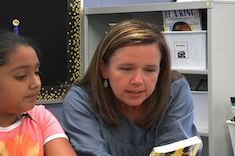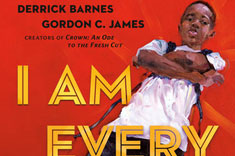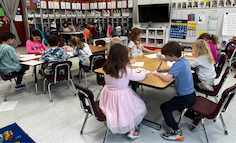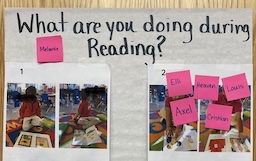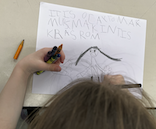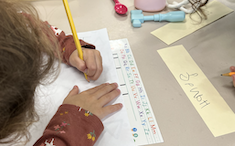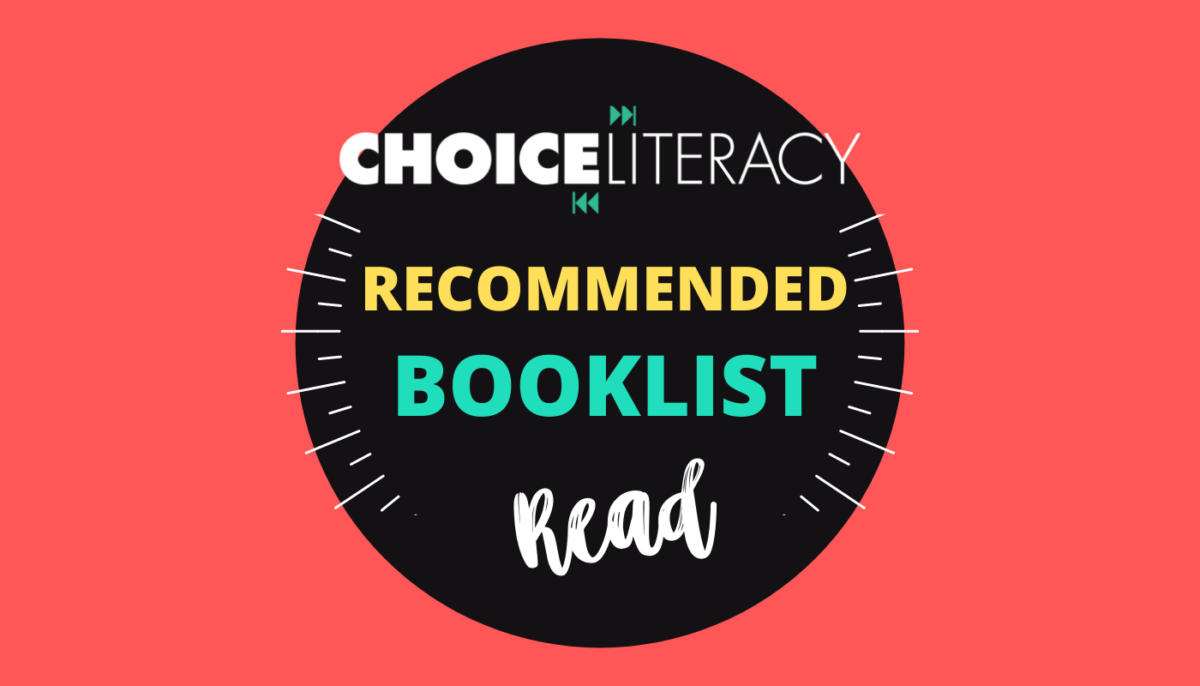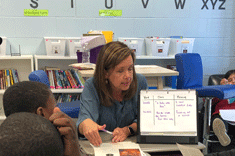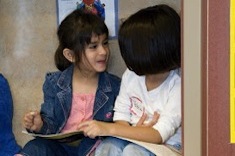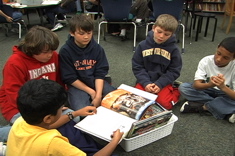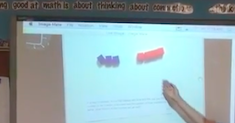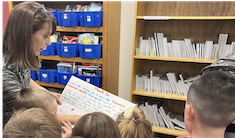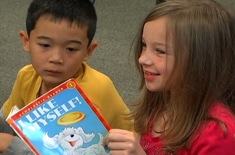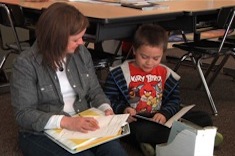1st
Latest Content
Partnering Phonics and Poetry
Jen Court gets creative with using materials for more than one skill to layer in additional phonics instruction and practice. Jen provides a guide to think critically about reusing resources throughout the day and across content areas. Download the Planning Tool for Phonics Lessons.
My Teaching Toolbox (Part 2)
Dana Murphy reminds us that having a teaching toolbox makes planning efficient and effective. In this second installment of a two-part series, Dana offers two additional approaches to delivering strong reading instruction.
Small Shifts That Make a Big Difference
Dana Murphy names two practices that made a big difference in her work as a reading specialist. You may be surprised at the simplicity and smallness that led to powerful gains in her readers.
Holding Space for Counter-Narratives That Honor Communities
Stella Villalba guides us to expand the counter-narrative texts we use in our classrooms. Counter-narrative texts challenge the stereotypes often seen about a group of people, and they celebrate the joy and resilience of a community. Stella provides a list of critical questions that allow us to deeply explore texts, as well as suggestions of books to read.
Let’s Write Together: The Importance of Class Books
Jen Court considers whether creating class books is a valuable use of time for today’s young students. As she teases out this question, she realizes class books are a relevant and essential instructional strategy.
Everyone Wants to Write?
Becca Burk reflects on creating a classroom where everyone wants to write. She offers timely advice for creating a community of writers.
Creating Learning Progressions with Students
Tara Barnett and Kate Mills outline the steps to involve students in defining how to progress as readers and then set goals. They offer a practical plan for empowering students to take ownership of their learning.
Managing Your Students’ Independent Work During Guided Reading
Are you ready to ditch small-group instruction because it seems too difficult for students to work independently? Lisa Mazinas compiled a helpful chart to problem solve common classroom issues and support student independence.
Learning from Our Favorite Illustrators
Ruth Metcalfe tapped a plethora of resources to help her first-grade writers understand how to communicate meaning with illustrations.
What’s Your Point of View?
Molly James helps us develop an essential point of view for uplifting choice in decision making for young writers and readers.
Alert! Mistakes in Progress
Becca Burk gives the science behind mistakes and growth, and offers suggestions on ways to use mistakes as a means to help students become critical thinkers and problem solvers.
Overcoming Challenges in Writing Workshop with Trauma-Informed Practices
Ruth Ayres shares three mindsets to help teachers prioritize connection over correction when teaching writers.
Young Author Celebrations
Jennifer Court shares the celebrations that propel students to engage in the Young Authors Program.
It’s Time to Admire: Sharing in the Beauty of Students’ Writing
Heather Fisher shares a process to help teachers learn to admire student writers and find the beauty in their work.
Opinion Writing in Primary Grades: Layers of Support
Ruth Metcalfe suggests several layer of supports to uplift young writers as they begin to write their opinions.
Taking a Stance: Supporting Opinions in Primary Writers
Josie Stewart and Hannah Tills expand their view of opinion writing to taking a stance, and are reminded of the power of choice and honoring student passions and interests. At the same time, students are reminded that their voice is heard and their opinions matter.
Energizing Early Readers: The Classroom Library as a Co-Teacher (Booklist)
Ruth Metcalfe shares a fun-loving and inspiring early reader booklist to help boost reading energy in her classroom library.
Five Ways to Teach Fluency
Dana Murphy reminds us of five ways to teach fluency…especially when reading seems laborious.
Six Tips to Plan a Family Literacy Night
Does planning a family literacy night seem overwhelming? Lisa Mazinas offers six tips to ensure a thoughtful and successful event.
QuickTake: Choice in Making Plans for Writing
Ruth Ayres shares the importance of giving students choice when planning their writing projects.
Validating Students
When an excited young reader interrupts the quiet hum of reading workshop, Becca Burk analyzes the important unseen choices students make as learners, and the powerful messages teachers’ responses send.
Centering Students’ Brilliance (Booklist)
Stella Villalba is passionate about centering the beauty, brilliance, and genius of all students in our classrooms. She shares an inclusive booklist to inspire and support other educators in doing the same.
Turn and Talk, Then What?
Vivian Chen offers useful tips for seasoned and new teachers when it comes to helping students engage in a turn-and-talk.
Choral Counting Routine
Mallory Messenger shares ways choral counting provides an opportunity for students to share ideas orally, process language and numbers, and bring out vocabulary within the context of looking for patterns.
Level Two Unlocked: Using the Language of Video Games to Engage Students in the Assessment Experience
Heather Fisher considers the research behind gamified experiences and applies it to a lengthy first-grade phonics assessment. Heather challenges us to gamify assessments to maintain the integrity of the assessment while increasing student engagement.
Helping Writers Self-Correct
What to do with writers who catch errors in isolation but not in their own writing? Cathy Mere suggests three ways to help students self-correct their writing.
Do the Hard Thing
Becca Burk reminds all of us that one of the important parts of being a teacher is helping students believe they are capable. Becca shares three practical ways to uplift student capability.
Good Work, Writer
Becca Burk asserts that every child can become a writer when given materials, opportunity, and authentic glimpses into what it means to be a writer. Most importantly, though, children need adults who believe they are writers.
Read Aloud Magic
Jen Court reminds us of the power of reading aloud to students and pushes us to remember the importance of planning to use books to engage students and hone teaching points.
Conferring Notebook Details
Bitsy Parks opens her conferring notebook and shares powerful ways to use conferring notes to differentiate instruction for students in reading and writing.
Browse Content By
Type
Category
- Assessment Tools
- Big Fresh Archives
- Booklists
- Choice Numeracy
- Classroom Design
- Common Core
- Community Building
- Conferring
- Content Literacy
- Digital Literacy
- English Language Learners
- Equity
- Family Relations
- Free Samples
- Guiding Groups
- Leadership
- Literacy Coaches
- Mentor Texts
- Minilessons
- New Teacher Mentors
- Podcasts
- Poetry
- Quote Collections
- Reading Strategies
- Self Care
- Struggling and Striving Learners
- Talking and Listening
- Teacher Study Groups
- Teaching Reading
- Teaching Writing
- Word Study and Vocabulary
Author
- Melissa Quimby
- Nawal Qarooni
- Gwen Blumberg
- Julie Cox
- The Lead Learners
- Hannah Tills
- Josie Stewart
- Ruth Metcalfe
- Mallory Messenger
- Becca Burk
- Jodie Bailey
- Vivian Chen
- Mary Brower
- Tiffany Abbott Fuller
- Stephanie Affinito
- Ruth Ayres
- Leigh Anne Eck
- Heather Fisher
- Shari Frost
- Julie Johnson
- Suzy Kaback
- Gigi McAllister
- Shirl McPhillips
- Melanie Meehan
- Cathy Mere
- Debbie Miller
- Tara Barnett and Kate Mills
- Tammy Mulligan
- Dana Murphy
- Bitsy Parks
- David Pittman
- Brenda Power
- Heather Rader
- Matt Renwick
- Mandy Robek
- Christy Rush-Levine
- Gretchen Schroeder
- Jen Schwanke
- Brian Sepe
- Katherine Sokolowski
- Stella Villalba
- Jennifer Vincent
Grade Level
Choice Literacy Membership
Articles
Get full access to all Choice Literacy article content
Videos
Get full access to all Choice Literacy video content
Courses
Access Choice Literacy course curriculum and training


